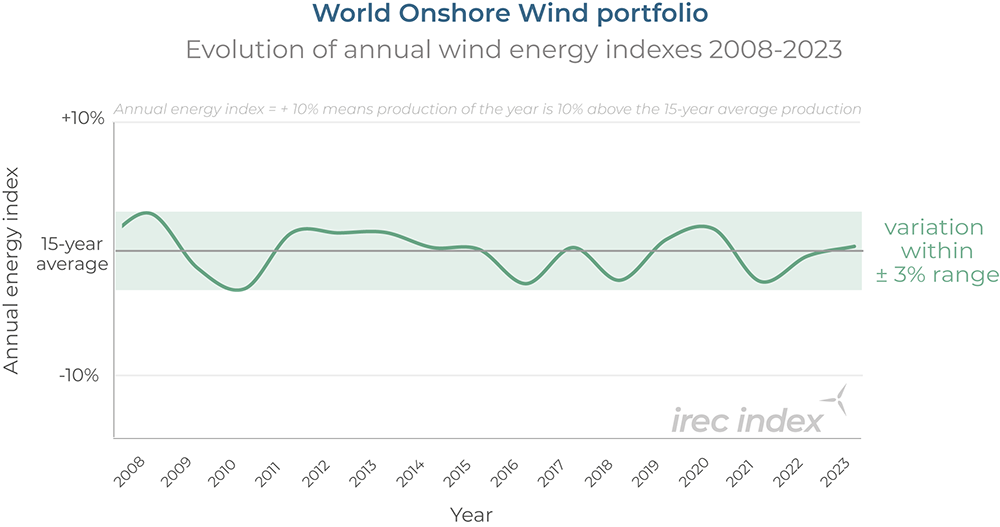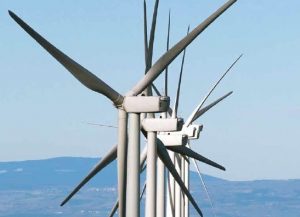
A study by Eoltech, a leading wind and solar resource assessment consultancy, shows that worldwide wind production is very predictable.
The study was aimed at assessing the variations of the global wind resource over the last 15 years. The data show that worldwide wind power production’s annual variations remain within a ± 3% range. These results are based on irec index, the wind energy index covering 80% of the world’s onshore wind farms installed as of 2023.
The study combines the irec wind energy indexes that Eoltech releases each month for the 300 geographical areas worldwide with the highest number of farms. By aggregating and weighting this data, Eoltech was able to generate a “Global” as well as a “European” wind energy index and provide an overview of global wind resource trends over the past 15 years.
The Global Index covers geographical areas that host about 80% of the world’s operating onshore wind farms as of 2023, while the European Index covers 97% of the continent’s operating wind farms. The European Index shows that wind resource annual variations are within a ± 7% range in Europe, compared to ± 3% worldwide.
“Operating wind farms experience a large diversity of wind regimes, which cause on a local scale significant resource variability from one year to another. Locally, the production of a wind farm can differ significantly from one year to another, up to 25%, due to the variation of the wind resource. But on a larger scale (Europe, World), cumulated production is much more stable. It should also be noted that our analysis does not show any downward trend over the last 15 years in the global wind resource,” said Habib Leseney, Eoltech CEO.
“Yes, the wind does always blow somewhere on the planet, and it is good news for wind power going forward,” said Leseney.
Irec design includes ERA5 data, one of the latest climate reanalysis data sets produced by the European Centre for Medium-Range Weather Forecasts (ECMWF). This indicator is mainly used by asset managers and wind farm owners to compare their production variation from one period to another. Such tools are crucial to assess the production capacity of their portfolio regardless of the wind speed variation level and enable to identify drift affecting the portfolio value over time.
MORE INFO https://www.eoltech.fr/



























